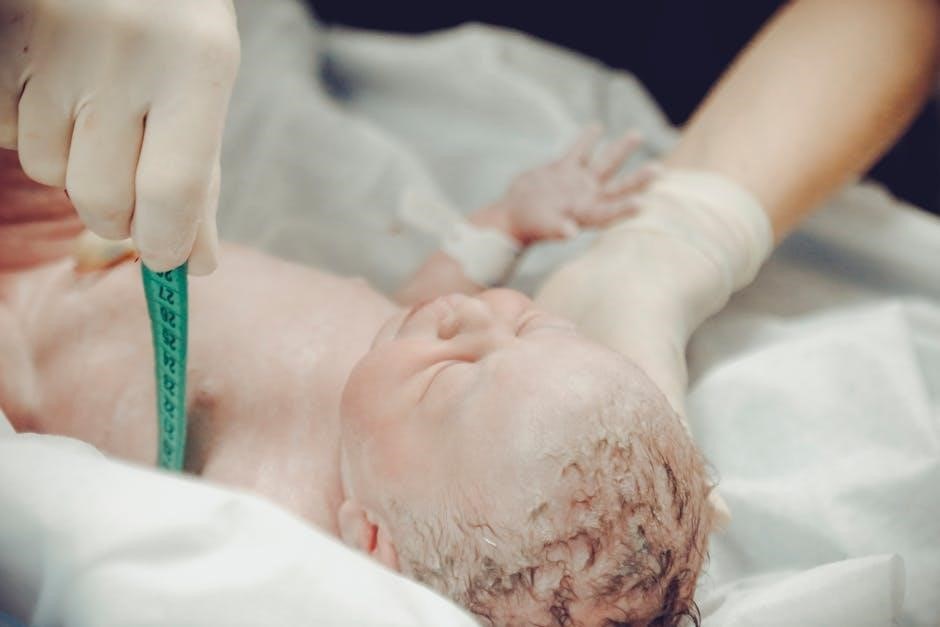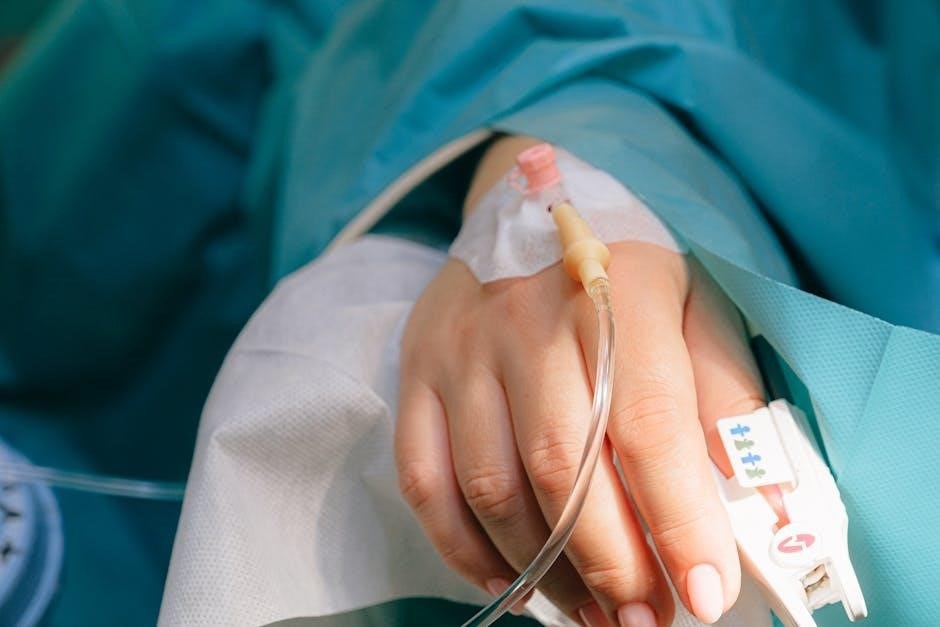Understanding Hospital Patient Menus
Hospital patient menus are carefully designed meal plans offered to individuals during their stay. They consider various nutritional needs and dietary restrictions to support recovery and overall health.
Purpose of Patient Menus
The primary purpose of hospital patient menus is to provide nourishment tailored to individual medical conditions, aiding in recovery and overall well-being. These menus ensure patients receive balanced meals, adhering to specific dietary requirements prescribed by healthcare professionals. Consideration is given to allergies, intolerances, and therapeutic diets, such as diabetic or low-sodium options. Patient menus play a vital role in supporting treatment plans, managing symptoms, and promoting healing during hospitalization. They also aim to enhance patient satisfaction and comfort during their stay, offering choices within their dietary limitations. Ultimately, patient menus contribute to a holistic approach to healthcare, integrating nutrition as a key component of patient care.

Key Components of a Hospital Patient Menu
A hospital patient menu includes nutritional considerations, dietary restrictions, and allergy information. These elements ensure that patients receive appropriate and safe meals during their hospital stay.
Nutritional Considerations
Nutritional considerations in hospital patient menus are paramount for promoting healing and maintaining patient well-being. Menus are designed to meet specific dietary needs, ensuring adequate intake of essential nutrients like proteins, vitamins, and minerals. Portion sizes are carefully calculated to align with dietary standards set by health departments.
Balanced meals, rich in fruits, vegetables, and lean proteins, support the recovery process. Furthermore, carbohydrate content is managed to meet the needs of diabetic patients, with clear labeling to indicate carbohydrate servings. The goal is to provide meals that contribute to the patient’s overall health and recovery journey, offering a variety of choices while adhering to strict nutritional guidelines.
Dietary Restrictions and Allergies
Hospital patient menus meticulously address dietary restrictions and allergies to ensure patient safety and comfort. Menus often feature symbols indicating compliance with specific diets, such as low-sodium or limited saturated fat options. Staff is trained to handle food allergies and intolerances, providing alternative meal choices as needed.
Patients are encouraged to inform their nurses of any dietary restrictions or allergies to facilitate proper meal selection. Some menu items may be unavailable on restricted diets, but suitable alternatives are always offered. This careful attention to dietary needs minimizes risks and supports a positive dining experience during the hospital stay.

Accessing Patient Menus
Accessing hospital patient menus is typically straightforward. Many hospitals provide menus in both physical and digital formats, ensuring easy access for patients and their families during their stay.
Availability in PDF Format
Many hospitals now offer their patient menus in PDF format for convenient access. This allows patients and their families to view the menu on personal devices like smartphones or tablets.
The PDF format ensures that the menu is easily readable and printable, promoting informed meal choices. Some hospitals even provide online links or QR codes for quick downloads. This digital availability enhances the overall patient experience, providing greater transparency and convenience in selecting meals that align with dietary needs and preferences during their hospital stay, contributing positively to their recovery process.
Examples of Hospital Patient Menus
Many hospitals publish their patient menus online. Examples include Aultman Hospital, which serves several counties in Ohio, and Wayne HealthCare, which caters to Darke County residents with diverse meal options.
Aultman Hospital Menu
Aultman Hospital, based in Canton, Ohio, provides a comprehensive menu for its patients, reflecting its commitment to high-quality healthcare. Serving Stark, Carroll, Wayne, Holmes, and Tuscarawas counties, the hospital considers various dietary needs. With a history spanning over 130 years, Aultman offers diverse options, from breakfast entrees like scrambled eggs and pancakes to various lunch and dinner selections. The menu aims to cater to different preferences and nutritional requirements, supporting patient recovery and well-being during their hospital stay, ensuring a focus on improved health within the community it serves.
Wayne HealthCare Menu
Wayne HealthCare, a trusted friend in the community, offers a patient menu designed with the well-being of Darke County residents in mind. Their room service menu, available in PDF format, includes options for breakfast, lunch, dinner, and snacks. The menu is designed to meet patient needs during recovery, considering dietary guidelines and restrictions. It also provides options for guest meals. Wayne HealthCare’s menu is designed to provide patients with nourishing and appealing food choices during their stay, focusing on quality and patient satisfaction, while also offering guidelines to ensure the best possible dietary support.

Factors Influencing Menu Choices
Menu choices are influenced by a patient’s medical condition, allergies, and dietary restrictions. Healthcare professionals tailor dietary plans to support treatment and recovery effectively.
Medical Condition and Treatment
A patient’s medical condition and ongoing treatment significantly shape their menu. Certain conditions necessitate specific dietary adjustments. For example, patients with diabetes require controlled carbohydrate intake, often indicated with green numbers on menus. Renal patients may need low-sodium options. Post-operative diets typically start with clear liquids, gradually progressing to solid foods as tolerated. Nutritional support is integrated into the overall treatment plan to promote healing and manage symptoms. Healthcare providers carefully consider these factors to ensure that each patient’s dietary needs are met, optimizing their health and recovery during their hospital stay. This personalized approach to nutrition plays a crucial role in supporting the body’s healing processes.

The Role of Nutrition in Patient Recovery
Proper nutrition is vital for patient recovery, aiding in wound healing and immune function. Hospital menus offer balanced options tailored to individual needs, promoting strength and overall well-being during recovery.
Importance of Balanced Meals
Balanced meals are crucial within the hospital setting because they provide the essential nutrients required for healing and regaining strength. These meals, carefully curated by dietitians, ensure patients receive adequate protein, carbohydrates, and healthy fats. Such balanced nutrition supports immune function, aids in tissue repair, and provides energy for daily activities during recovery. Moreover, balanced meals can help manage underlying health conditions and prevent nutritional deficiencies.
Properly balanced nutrition is essential for overall patient well-being. A well-rounded diet can significantly impact a patient’s ability to recover and return home. Hospitals often have dietitians available to consult and make balanced meal plans.
Technological Advancements in Menu Management
Technology is transforming hospital menu management through digital ordering systems. These systems enhance efficiency, personalize patient choices, and streamline dietary tracking, ultimately improving patient satisfaction and nutritional care.
Digital Ordering Systems
Digital ordering systems within hospitals represent a significant advancement in patient care. They allow patients to conveniently select meals from their bedsides, often via tablets or interactive screens. These systems integrate with patient medical records, ensuring dietary restrictions and allergies are automatically considered. This reduces errors and enhances safety.
Furthermore, digital platforms enable real-time menu updates and offer detailed nutritional information for each item. Hospitals benefit from streamlined processes, reduced food waste, and improved patient satisfaction. The data collected through these systems also provides valuable insights into patient preferences and dietary needs, aiding in menu optimization and personalized nutrition plans.
